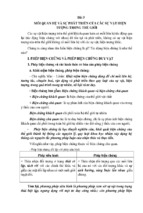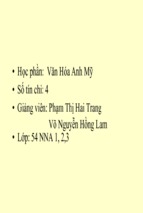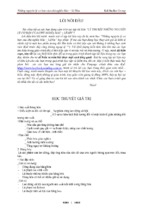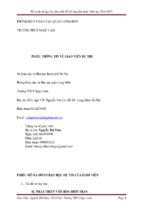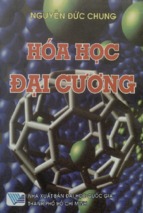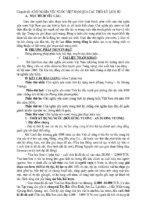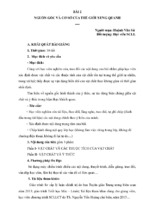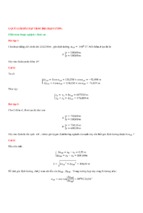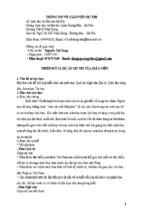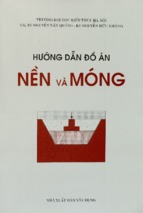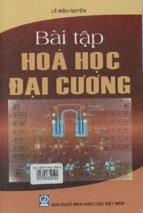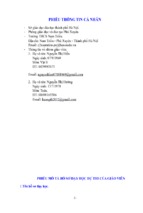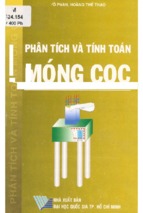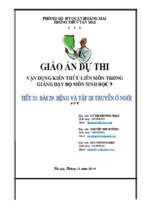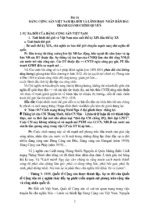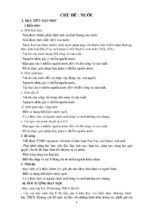Downloaded from ascelibrary.org by RMIT UNIVERSITY LIBRARY on 01/03/19. Copyright ASCE. For personal use only; all rights reserved.
Pipelines
2018
Utility Engineering,
Surveying, and
Multidisciplinary Topics
Papers from Sessions of the
Pipelines 2018 Conference
Toronto, Ontario, Canada
July 15–18, 2018
Edited by
Christopher C. Macey, P.Eng.
Jason S. Lueke, Ph.D., P.Eng.
Downloaded from ascelibrary.org by RMIT UNIVERSITY LIBRARY on 01/03/19. Copyright ASCE. For personal use only; all rights reserved.
PIPELINES 2018
Utility Engineering, Surveying, and
Multidisciplinary Topics
PROCEEDINGS OF SESSIONS OF THE PIPELINES 2018
CONFERENCE
July 15–18, 2018
Toronto, Ontario, Canada
SPONSORED BY
Utility Engineering and Surveying Institute of the
American Society of Civil Engineers
EDITED BY
Christopher C. Macey, P.Eng.
Jason S. Lueke, Ph.D., P.Eng.
Published by the American Society of Civil Engineers
Downloaded from ascelibrary.org by RMIT UNIVERSITY LIBRARY on 01/03/19. Copyright ASCE. For personal use only; all rights reserved.
Published by American Society of Civil Engineers
1801 Alexander Bell Drive
Reston, Virginia, 20191-4382
www.asce.org/publications | ascelibrary.org
Any statements expressed in these materials are those of the individual authors and do not
necessarily represent the views of ASCE, which takes no responsibility for any statement
made herein. No reference made in this publication to any specific method, product, process,
or service constitutes or implies an endorsement, recommendation, or warranty thereof by
ASCE. The materials are for general information only and do not represent a standard of
ASCE, nor are they intended as a reference in purchase specifications, contracts, regulations,
statutes, or any other legal document. ASCE makes no representation or warranty of any
kind, whether express or implied, concerning the accuracy, completeness, suitability, or
utility of any information, apparatus, product, or process discussed in this publication, and
assumes no liability therefor. The information contained in these materials should not be used
without first securing competent advice with respect to its suitability for any general or
specific application. Anyone utilizing such information assumes all liability arising from such
use, including but not limited to infringement of any patent or patents.
ASCE and American Society of Civil Engineers—Registered in U.S. Patent and Trademark
Office.
Photocopies and permissions. Permission to photocopy or reproduce material from ASCE
publications can be requested by sending an e-mail to
[email protected] or by locating a
title in ASCE's Civil Engineering Database (http://cedb.asce.org) or ASCE Library
(http://ascelibrary.org) and using the “Permissions” link.
Errata: Errata, if any, can be found at https://doi.org/10.1061/9780784481660
Copyright © 2018 by the American Society of Civil Engineers.
All Rights Reserved.
ISBN 978-0-7844-8166-0 (PDF)
Manufactured in the United States of America.
Pipelines 2018
iii
Downloaded from ascelibrary.org by RMIT UNIVERSITY LIBRARY on 01/03/19. Copyright ASCE. For personal use only; all rights reserved.
Preface
Pipelines are the arteries of the modern world that convey the essence of what drives quality of
life, commerce, and public health for all of society. Whether conveying drinking water, collecting
wastewater, storage and conveyance of storm water, or transport of petroleum or other fluids –
pipelines are one of the most essential elements of modern infrastructure that impacts the way we
live and ability to improve the world around us.
This year’s conference theme is Revitalizing Global Underground Utility Infrastructure. It
focuses on the awareness that pipelines are a global topic essential to our quality of life; that we
have common issues and concerns independent of our nationality; and that our industry can work
together to truly develop solutions without borders. This is an exciting realization that holds hope
and promise for our future.
In coordination with the American Society of Civil Engineers, the technical program and this
publication were planned and implemented by the Technical Program Committee, led by the
Technical Co-Chairs. A call for abstracts was made for the first Pipelines conference outside of
the United States, from which well over 300 abstracts were submitted. These abstracts were then
sorted into tracks based on the general topic areas of Condition Assessment, Planning and Design,
Construction and Rehabilitation, Utility Engineering and Survey, Multi-discipline, and Technical
Posters. In addition, 5 panel sessions were included with topics from Women in Engineering to
Ethics to Emergency Response as well as other specialized technical topics. This resulted in an
extraordinarily high-quality program containing 175 papers and 15 poster presentations.
For publication purposes, technical papers from the eight presentation tracks were consolidated
into the following three subjects: 1- Pipelines 2018: Planning & Design, 2- Pipelines 2018:
Condition Assessment and Construction & Rehabilitation, and 3- Pipelines 2018: Multidiscipline
Topics and Utility Engineering and Survey.
On behalf of the Technical Program Committee, we are pleased to offer you the Proceedings of
ASCE Pipelines 2018 “Revitalizing Global Underground Utility Infrastructure”.
Yours truly,
Chris Macey, P.Eng., M.ASCE and Jason Lueke, Ph.D., P.Eng., M.ASCE
Technical Co-Chairs
© ASCE
Pipelines 2018
iv
Acknowledgments
Downloaded from ascelibrary.org by RMIT UNIVERSITY LIBRARY on 01/03/19. Copyright ASCE. For personal use only; all rights reserved.
Technical Program Committee
Technical Program Co-Chairs
Chris Macey, P.Eng., AECOM
Jason S. Lueke, Ph.D., P.Eng., Associated Engineering
Conference Co-Chairs
Tennyson Muindi, P.E., McMillen Jacobs Associates
William Fernandes, Toronto Water
Technical Program Track Chairs
Jeff W. Heidrick, P.E., ENV SP, Burns & McDonnell, Planning and Design
Shaoqing Ge, Ph.D., American Water, Planning and Design
Roberts McMullin, P.E., EBMUD, Condition Assessment
Felipe Pulido, P.E., Arcadis Condition Assessment Track
Murat Engindeniz, P.E., Simpson Gumpertz and Heger, Construction & Rehabilitation
Duane Strayer, P.Eng, Associated Engineering, Construction & Rehabilitation
Doug Jenkins, P.E., CH2M, Utility Engineering and Surveying
Mark Mihm, P.E., HDR Multidiscipline
Scott Christensen, PE., HDR, Poster Coordinator
Pre-Conference Workshop Leads
Workshop Chair – Erin McGuire, P.E., CDM Smith
Nathan Faber, P.E. - Large Diameter Pipeline Forum
Andrea Chisholm, PMP - Soft Factors of Project Success and a Partnering-Based Model of
Project Delivery
Jerry Colburn - Right-of-Way Considerations in Pipeline Routing
Sri Rajah, Ph.D., P.E., G.E., S.E., P.Eng. - Upcoming MOP on Seismic Design of Buried Water
& Wastewater Pipelines
Mark Knight, Ph.D., P.Eng. - Save Construction Time and Money with Subsurface Utility
Engineering (SUE)
ASCE Staff
Corinne Addison
Cristina Charron
Ricardo Colon
Donna Dickert
Susan Dunne
Brian Foor
Aaron Koepper
Allison Ly
© ASCE
Carolyn Martin
Nives McLarty
Andrew Moore
Susan Reid
Sean Scully
John Segna
Trevor Williams
Pipelines 2018
v
Downloaded from ascelibrary.org by RMIT UNIVERSITY LIBRARY on 01/03/19. Copyright ASCE. For personal use only; all rights reserved.
The Technical Program Co-Chairs and the Steering Committee would like to thank the over 80
individuals which participated as part of the 2018 Technical Committee. Everyone worked as a
team to review abstracts, papers, and posters, and continued to collaborate throughout the
construction of this year’s technical program. Most of the below technical committee members
also served as moderators for the conference.
Pat Acker, P.E., P.L.S.
Brian Ball
George Bontus, P.Eng
Mike Brannon
Adam Braun, P.Eng
William Brick, P.E., BCEE
Keith Bushdiecker, P.E.
Dave Caughlin
Kyle Couture, P.E.
Robert Cullwell, P.E.
Matthew Duffy, PE
William Elledge, P.E.
Christine Ellenberger, P.E.
Michael Fleury, P.E., BCEE
Tober Francom, Ph.D.
Amin Ganjidoost
Hadi Ganjidoost
Chris Garrett
Matt Gaughan, P.E.
Jim Geisbush, P.E.
Ahmad Habibian, Ph.D., P.E.
Christopher Haeckler, P.E.
Neil Harvey
Shelly Hattan, P.E., CCM
Cliff Jones
Brent Keil, P.E., SCWI
Josh Kercho, P.E.
Sharareh Kermanshachi, Ph.D., P.E., LEED
AP, PMP
Joel Koenig, P.E.
Steven Kramer, P.E.
Ian Lancaster
Mike Larsen
Jeff LeBlanc
Bryon Livingston, P.E.
Charles Marsh
Cian McDermott, P.Eng
Rich Mielke, P.E.
Antonio Miglio, Ph.D., P.Eng.
Peter Nardini, P.E.
Henry Polvi, P.E.
Mark Poppe, P.E.
Anna Pridmore, Ph.D., P.E.
Sri Rajah, Ph.D., P.E.
Mellownie Salvador
Eric Schey
Walt Schwarz, PE
Veysel (Firat) Sever, Ph.D., P.E., BCEE
Ad Shatat, P.Eng
Jonathan Shirk, P.E.
Jeffrey Shoaf, P.E., PMP
William Shook
Jerry Snead, P.E.
Andrew Sneed, P.E.
Andrew Sparks, P.E.
Ross Standifer, P.E.
Andrew Stanton, P.E.
James Steele
Alan Swartz, P.E.
Jeni Tatum, P.E.
Sanjay Tewari
Gary Thompson, MMP
Daniel Toft
Berk Uslu, Ph.D.
Ricardo Vieira, P.E.
Bob Walker, P.E., MPA
Toby Weickert
Andrew Williams, P.E.
Kas Zurek
The Technical Program Co-Chairs also thank the authors and exhibitors for their dedication to
the industry in presenting at this conference. Without your contributions, the conference would
not be possible.
© ASCE
Pipelines 2018
Downloaded from ascelibrary.org by RMIT UNIVERSITY LIBRARY on 01/03/19. Copyright ASCE. For personal use only; all rights reserved.
And lastly, the Technical Program Co-Chairs express special thanks to Tennyson Muindi and
William Fernandes, Conference Co-Chairs, and the Steering Committee for their efforts and
leadership during the planning and execution of Pipelines 2018 Conference.
© ASCE
vi
Pipelines 2018
vii
Contents
Downloaded from ascelibrary.org by RMIT UNIVERSITY LIBRARY on 01/03/19. Copyright ASCE. For personal use only; all rights reserved.
Asset Management
Water and Energy Efficiency: Transmission Operations Optimizer
(TOO) City of Toronto Water Supply ...................................................................................... 1
Gary Thompson, Rose Hosseinzadeh, Alnoor Allidina, Henry Polvi,
and Jacek Błaszczyk
Ahead of the Curve: Lake Huron and Elgin Area Water Systems Develop
Their Asset Management Program .......................................................................................... 9
Heather Edwards, Billy Haklander, and Andrew Henry
The City of Montreal’s Experience with Pipeline Asset Management .................................. 17
Serge Martin Paul and Brian Brochu
Tarrant Regional Water District’s Asset Management of the Pipeline
System Using GIS .................................................................................................................... 26
Jason Gehrig, Courtney Jalbert, and Lauren Tijerina
Defining a Sustainable Underground Infrastructure Framework: ISO
Asset Management and ISO Life Cycle .................................................................................. 37
Gregory M. Baird and Tad Radzinski
Fixing the O&M Budget with Asset Management to Create More Capital
Debt Capacity for Pipe Projects ............................................................................................. 43
Gregory M. Baird
Cost, Risk, Performance: Icon Water’s Sewer Network Investment Plan............................ 53
Andy Gibson, Sagar Khadka, and Mark Engelhardt
Construction
Understanding Hot Tapping and Plugging as an Effective Procedure to
Facilitate Relocation, Repair, or Modification of Water Infrastructure
When Uninterrupted Operation is Necessary ........................................................................ 63
Charles Herckis
Using Air Caster Technology to Install Large Diameter Pipe in a Tunnel ........................... 74
Shelly Hattan, Robert Fults, and Charles Cameron
Design
DC Water at Work: Using a Composite Liner Design to Rejuvenate the
Service Life of Large Sewer Tunnels ...................................................................................... 82
Steve Bian, Renni Zhao, Mandy LeBlanc, and Qi He
© ASCE
Pipelines 2018
viii
Downloaded from ascelibrary.org by RMIT UNIVERSITY LIBRARY on 01/03/19. Copyright ASCE. For personal use only; all rights reserved.
Results of a Full-Scale Fault-Offset Test on a Glass Fiber Reinforced
Polymer Pipe ........................................................................................................................... 93
Hendrik Williams, Amir Fam, and Ian Moore
The Tree Amigos: Friendly Practices to Avoid, Minimize, and Mitigate
Impacts to a Forested Wetland ............................................................................................. 103
Chris Bogert, Paul Dossett, David Flores, and Todd Butler
DC Water at Work: Tackling Fast Track CIP with In-House Design of
SIPP ....................................................................................................................................... 113
Steve Bian, Renni Zhao, and Mandy LeBlanc
Thirlmere—Past, Present, and Future ................................................................................. 124
S. Greenwood and J. Hilton
Olmsted Flowline Seismic Retrofit ....................................................................................... 135
Mitchell Dabling and Cort Lambson
Inspection
New Developments in Multi-Sensor Condition Assessment Technologies
for Large Diameter Pipe Infrastructure............................................................................... 142
Csaba Ékes
Multi-Sensor Inspection Comes to Salt Lake City, Utah ..................................................... 149
Emma McGowan, Doug Jenkins, Derek Velarde, and Mark Wade
Optimizing Utility Valuation Using Acoustic Condition Assessment
Technologies .......................................................................................................................... 159
John Marciszewski and Anthony Festa
Materials
Evaluation of the Environmental Sustainability during Fabrication of
Commonly Used Pipe Materials ........................................................................................... 168
Alhossin Alsadi, John Matthews, and Elizabeth Matthews
How Green Are You? Economic and Environmental Sustainability:
Assessing the Global Warming Potential (GMP) of Your Underground
Infrastructure ........................................................................................................................ 177
Gregory M. Baird and Tad Radzinski
Planning
Is It a Road Project or a Water Main Project? .................................................................... 186
Moubin Al-Malla and Cassandra Marshall
© ASCE
Pipelines 2018
ix
Downloaded from ascelibrary.org by RMIT UNIVERSITY LIBRARY on 01/03/19. Copyright ASCE. For personal use only; all rights reserved.
Analyzing Conflicts over Water Extraction from Great Lakes of North
America through Game Theory Approaches ....................................................................... 195
Sevda Payganeh, Mark A. Knight, and Carl T. Haas
Transmission Pipeline Route Analysis to Support Growing Water
Demand.................................................................................................................................. 204
Daniel Huffines and Chris Leathers
The U.S. City’s Resilient Solution......................................................................................... 215
Peter D. Dyke and Sarah Eisenstat
Project Management
Urgent Need Drives Record Completion of 42-Inch Pipeline in
Flint, Michigan ...................................................................................................................... 224
K. Couture and M. Raysin
Trans-Basin Pipelines as a Solution to Water Resources: A Network for
Water Resilience and Economic Vitality .............................................................................. 234
Maury D. Gaston
Some of the Perils and Benefits When Design Responsibility Is Moved
Down the Process toward Contractors and Manufacturers ................................................ 245
Dennis A. Dechant
Who Are You Going to Call? On-Call Contracting for Large Diameter
Water Line Repairs ............................................................................................................... 254
James Wilson, Gregory Henry, and Benjamin McCray
Stopping and Re-Starting a $90 Million Pipeline Project Is Harder Than
It Looks .................................................................................................................................. 264
James Light, Matt Turney, Mike Gossett, and Randy Parks
The Only Constant Is Change—Lessons Learned in Construction
Staffing .................................................................................................................................. 275
Todd Warrix and Andrea Beymer
DIGGS Does Pipelines .......................................................................................................... 281
Robert Bachus, Allen Cadden, and Nikolaos Machairas
Research
Using Augmented Reality in Horizontal Directional Drilling to Reduce
the Risk of Utility Damages .................................................................................................. 290
Amr Fenais, Nikolas Smilovsky, and Samuel T. Ariaratnam
© ASCE
Pipelines 2018
x
Seismic
Large Diameter Couplings for Seismic Conditions.............................................................. 299
Chris Sundberg
Downloaded from ascelibrary.org by RMIT UNIVERSITY LIBRARY on 01/03/19. Copyright ASCE. For personal use only; all rights reserved.
Utilities
Why Are These Record Drawings So Inaccurate?............................................................... 304
Roger Beieler
Developing a New Pressure Plane at Super Speeds: Fort Worth
Northside IV 24” Water Main .............................................................................................. 311
Olivia Kerss, Daniel Stoutenburg Jr., and Roberto C. Sauceda
Assessment of Potential Damage to Utilities Due to Tunneling
and Excavation ...................................................................................................................... 319
Masoud Manzari, Sandra Rolfe-Dickinson, Richard Atkinson,
and Mohamed Hosney
Deep Lake Water Intakes: Construction, Operation, and
Maintenance of the City of Toronto and Enwave Corporation
Deep Lake Water Intakes ..................................................................................................... 329
Niall Robertson and Mike Brannon
Maintaining Reliability of a Cooling Water Supply System:
20 Years of Lessons Learned ................................................................................................ 333
Robert Lotts, Jerald Moreland, Doug Anderson,
Mehdi Zarghamee, Peter Nardini, Shabbir Pittalwala,
Rafael Balderrama, and Anna Pridmore
© ASCE
Pipelines 2018
1
Water and Energy Efficiency: Transmission Operations Optimizer (TOO) City of Toronto
Water Supply
Gary Thompson1; Rose Hosseinzadeh2; Alnoor Allidina, Ph.D., P.Eng., C.Eng.3;
Henry Polvi, P.Eng.4; and Jacek Błaszczyk, Ph.D.5
Downloaded from ascelibrary.org by RMIT UNIVERSITY LIBRARY on 01/03/19. Copyright ASCE. For personal use only; all rights reserved.
1
City of Toronto, Toronto Water, Water Supply, 235 Cottingham St., Toronto, ON M4V 1C7.
E-mail:
[email protected]
2
City of Toronto, Toronto Water, Water Supply, 235 Cottingham St., Toronto, ON M4V 1C7.
E-mail:
[email protected]
3
IBI Group, 9133 Leslie St., Suite 201, Richmond Hill, ON, Canada L4B 4N1. E-mail:
[email protected]
4
City of Toronto, Toronto Water, Water Supply, 235 Cottingham St., Toronto, ON M4V 1C7.
E-mail:
[email protected]
5
Research and Academic Computer Network (NASK), Warsaw, Poland. E-mail:
[email protected]
ABSTRACT
This paper describes the implementation of an automatic control system based on operational
optimization, for city of Toronto and York Region Water Transmission System. The new
automation system has been in operation since November 2015. The water supply system,
serving a population of 3.4 million, is the largest in Canada and one of the largest in North
America. The system consists of treated water pumping at four filtration plants, 18 pumping
stations, 15 reservoirs/tanks, 126 pumps (up to 1,865 kW (2,500 hp)), and approximately 500 km
(310 miles) of large transmission mains. While the city of Toronto and the region of York
provide the water delivery/service requirements in a cost effective and uninterrupted manner, the
complexity of the water system and the volatility and complex structure of the energy rates,
present opportunities for benefitting from automation and further optimizing operations. As part
of the new automation process, the transmission operations optimizer (TOO) minimizes energy
used and cost of energy, while ensuring fundamental service delivery standards including
pressure, flow, and storage are met. Pre-set minimum (critical) storage levels are not violated.
‘Optimal’ automatic control strategies are achieved for different seasonal, weekday/weekend
demand patterns, as well as when abnormal events occur such as a pumping station or filtration
plant being taken out-of-service. TOO involves water consumption/demand prediction, energy
rate prediction, hydraulic modeling, mathematical optimization, analytical algorithms, data
integration and on-line monitoring of system performance, and energy spot-market rate.
INTRODUCTION
Toronto Water, division of the City of Toronto, provides drinking, wastewater and storm
water services to 3.4 million residents and businesses. It owns CAD$28.3 billion dollars in
infrastructure. Toronto Water is primarily responsible for the operation of the Water System.
Within Toronto Water, the Water Supply unit, consisting of 60 staff and a separate control room
operation, is responsible for the pumpage, storage and transmission of drinking water. The
supply system is a large, complex and integrated system which consists of 4 large water
treatment plants, 500 km (310 miles) of large diameter transmission mains, 18 pumping stations,
15 reservoirs and tanks, and 126 pumping units with a 1,200 MLD (317 MGD) average
consumption distributed over 6 pressure zones & 13 pressure districts. This trunk water main,
© ASCE
Downloaded from ascelibrary.org by RMIT UNIVERSITY LIBRARY on 01/03/19. Copyright ASCE. For personal use only; all rights reserved.
Pipelines 2018
transmission system, then supplies the local distribution water main system. The Water Supply
unit also supplies water to a significant portion of southern York Region.
Prior to the implementation of TOO, the Water Supply system within the City of Toronto
was essentially manually operated. Manual operation consisted of an operator, guided by various
standard operations and maintenance procedures, determined pump start / stop and run durations.
This methodology was utilized to manage routine and non-routine situations. Non-routine
situations include pumping units out of service, hydro failure, water treatment plant down time,
etc.
Electrical energy costs make up the most significant portion of the operating budget of an
integrated system of this scale. On average Toronto spends CAD$40 million annually on
electrical energy costs of which CAD$26 million of that is the responsibility of the Water Supply
unit. Over 90% of the energy required for the Toronto-York water system is managed by Toronto
Water.
Energy pricing in Ontario can be volatile and complex since it includes commodity charges
(energy kWh, based on the spot market), demand charges (max kW, kVA) and Global
Adjustment (GA) charges. As a result, the development and utilization of an automated
optimized pumping solution would provide significant savings. This being the case, the City of
Toronto and York Region partnered to develop TOO which provides opportunities to leverage
reservoir storage, automation, energy price predictions, hydraulic modelling and historical data
to create daily station schedules to reduce electricity use and cost. With the implementation of
TOO on November 9, 2015, Water Supply moved from a “computer manual” operation to an
“optimized” automated operation.
Tables 1a and 1b provide data showing the average power for the Water Supply pumping
stations.
ENERGY SAVING OPPORTUNITIES
Transmission Operations Optimizer (TOO) is a custom designed, “real-time", online
software that automatically determines optimal pumping control strategies. TOO will minimize
electrical costs at all times: amidst electrical power cost variations, planned / unplanned
equipment downtime, demand / storage variations; while maintaining customer service standards
for pressures, flows, and reservoir storage levels. TOO inputs consist of real-time weather data,
Hydro (power/energy) rates, SCADA data and past water demand data which are used by
sophisticated software algorithms in the “Smart Real-time Water System Control System” [1] to
generate an output control strategy, displayed as pump schedules and reservoir profiles. These
optimal strategies are reviewed and approved by a Water System operator. The approved strategy
is then automatically transferred directly to SCADA. See Figure 1. The pumps then start / stop in
accordance with the strategy.
Table 1a - Water Supply Energy Demand, Water Treatment Plants (average kW (hp))
Water Treatment Plants Pumping Stations kW (hp)
R.C. Harris
5,060 (6,782)
R.L. Clark
6,700 (8,981)
F.J. Horgan
4,770 (6,394)
Island
800 (1,072)
WTP Total
17,330 (23,230)
© ASCE
2
Downloaded from ascelibrary.org by RMIT UNIVERSITY LIBRARY on 01/03/19. Copyright ASCE. For personal use only; all rights reserved.
Pipelines 2018
3
Table 1b - Water Supply Energy Demand, Pumping Stations (average kW (hp))
Pumping Station
kW (hp)
John Street
2,955 (3,960)
Ellesmere
2,762 (3,700)
Richview
1,500 (2,010)
Rosehill
1,190 (1,595)
High Level
1,125 (1,508)
Keele
806 (1,080)
Eglinton
736 (986)
Scarborough
533 (714)
West Toronto
483 (647)
Milliken
460 (616)
St Albans
460 (616)
Lawrence
443 (594)
Armour Heights
432 (579)
Kennedy
351 (470)
Parkdale
325 (435)
William Johnston
248 (332)
Thornhill
18 (24)
PS Total
14,827 (19,875)
Real-time
Weather Data
Hydro Rates
SCADA Data
TRANSMISSION
SMART
REALOPERATIONS
TIME
WATER
OPTIMIZER
SYSTEM
CONTROL
Output to SCADA
(Control Strategy)
Past Demand Data
Figure 1. Schematic of Transmission Operations Optimizer
Real-time weather data contains the latest current conditions and 7 day forecast details from
Environment Canada. Hydro real time and predicted rates inputs are obtained from the
Independent Electricity System Operator (IESO). SCADA real time and historical inputs are
obtained from City and Region network data servers. Historical demand data is also obtained
from the network data servers.
In general, TOO runs as follows [1] (See Figure 2):
1. Collect external factors including weather, energy rates, system status and data. This
includes, but is not limited to, reservoir levels, equipment out-of-service, equipment
auto/manual modes, and production costs
2. Run demand model to predict demand
© ASCE
Pipelines 2018
4
Downloaded from ascelibrary.org by RMIT UNIVERSITY LIBRARY on 01/03/19. Copyright ASCE. For personal use only; all rights reserved.
3. Determine potential optimal strategies in conjunction with hydraulic & quality model
4. Analyze results to check strategies
5. If results are acceptable, apply strategy to SCADA systems, otherwise re-run Optimizer
with changes to the constraints.
Figure 2. Transmission Operations Optimizer (TOO) Architecture
OPTIMIZER AND PUMP CONTROL
TOO operation ("a run") can be initiated manually by the operator or automatically based on
scheduled time and on various “triggers". (See Figure 3). These triggers are based on equipment
status changes, storage profile deviations or energy rate deviations. Once an optimizer “run” is
complete and a new strategy (pump schedule and reservoir profiles) (see Figure 4) is available,
the operator reviews the strategy (primarily pump schedule) to ensure that the pumps and the run
times appear reasonable. Additional information is available for review, including predicted
reservoir profiles, if required. Once these conditions are met, the operator “accepts” the solution
which allows the schedule to be transferred automatically from the TOO system to SCADA. If a
proposed schedule is declined by the operator, the operator can change some parameters (such as
limits), and then re-run TOO to provide an alternate solution based on new system conditions.
Note that this alternate solution will be optimal with respect to the latest conditions. The option
also exists for specifying manual pump start / stop times at individual pumping stations if
required.
SYSTEM IMPACTS
TOO pumping strategy tends to achieve an increase in flow rate when energy costs are low
and conversely decrease flow decreases when energy costs are high. (See Figure 5)
TOO pumping strategy results in an overall change in reservoir storage profile patterns. For
example, storage levels tend to be lower and vary over the course of a week from the period prior
to TOO usage (see Figure 6).
© ASCE
Pipelines 2018
5
Downloaded from ascelibrary.org by RMIT UNIVERSITY LIBRARY on 01/03/19. Copyright ASCE. For personal use only; all rights reserved.
CONCLUSION / BENEFITS
TOO was launched on November 9, 2015. Since then, energy savings have been
approximately 8 Million kWh (27,315 Million Btu) per year. This is equivalent to 5,000 tonnes
(5,512 tons) of Carbon Dioxide emissions not pumped into the environment. This equates to:
20 Million km (12.4 Million miles) driven by an average passenger vehicle, or
1,200 passenger vehicles driven for one year, or
Annual electricity use for 800 homes, or
13,000 barrels of oil consumed.
Figure 3. TOO Run Triggers and Controls
Energy cost saving obtained is approximately CAD$1.38 Million/Year. Figure 7 shows the
reduction in actual energy per unit of water pumped. Future improved costs savings are expected
as TOO function and water system facility infrastructure and practices are enhanced. Results
have been verified by City, Toronto Hydro and third party reviewers. As a result of TOO, Water
Supply has received incentives, recognition and awards such as:
Toronto Hydro Save on Energy Award of CAD$1,628,595.00 in 2016
City of Toronto City Manager's Award 2016
Recognition in the Environmental Commissioner of Ontario – “Every Drop Counts”
2016-2017 Annual Energy Conservation Report
© ASCE
Downloaded from ascelibrary.org by RMIT UNIVERSITY LIBRARY on 01/03/19. Copyright ASCE. For personal use only; all rights reserved.
Pipelines 2018
© ASCE
6
Figure 4. TOO Pump Schedule
Figure 5. Transmission Operations Optimizer (TOO) Pumping Station Flow and Rate
Downloaded from ascelibrary.org by RMIT UNIVERSITY LIBRARY on 01/03/19. Copyright ASCE. For personal use only; all rights reserved.
Pipelines 2018
7
Figure 6. Keele Reservoir profile change 2015 vs 2017
Figure 7. Transmission Operations Optimizer (TOO) - Energy Savings
© ASCE
Pipelines 2018
TOO's operational flexibility, which facilitates it's utilization in a fully or partially automated
mode of operation, allows it to compliment Global Adjustment, Demand Response or other
energy optimizing activities providing additional opportunities for increased savings with respect
to market energy rate triggers.
Downloaded from ascelibrary.org by RMIT UNIVERSITY LIBRARY on 01/03/19. Copyright ASCE. For personal use only; all rights reserved.
REFERENCES
1. J. Błaszczyk, K. Malinowski, and A. Allidina. Optimal Pump Scheduling by Non-Linear
Programming for Large Scale Water Transmission System. In N. Callaos, T.G. Gill, and B.
Sánchez, editors, Proc. CCISE 2013, pages 7–12, Winter Garden, Florida, U.S.A., 2013.
International Institute of Informatics and Systemics (IIIS).
2. K. Malinowski, J. Błaszczyk, and A. Allidina. Optimizing Control for Large Scale Dynamic
Systems; General Issues and Case Study Results: Transmission Operations Optimizer for
Toronto Water System. In The 23rd ICE/IEEE International Technology Management
Conference (ITMC), Madeira Is- land, Portugal, June 27-29, 2017, page 8. IEEE, June 2017.
3. J. Błaszczyk, K. Malinowski, and A. Allidina. Aggregated Pumping Station Operation
Planning Problem (APSOP) for Large Scale Water Transmission System. In K. Jónasson,
editor, Proc. PARA 2010, volume 7133 of Lecture Notes in Computer Science, pages 260–
269, Berlin / Heidelberg, 2012. Springer-Verlag Inc.
© ASCE
8
Pipelines 2018
9
Ahead of the Curve: Lake Huron and Elgin Area Water Systems Develop
Their Asset Management Program
Heather Edwards1; Billy Haklander, P.Eng.2;
and Andrew Henry, P.Eng.3
Downloaded from ascelibrary.org by RMIT UNIVERSITY LIBRARY on 01/03/19. Copyright ASCE. For personal use only; all rights reserved.
1
Pure Technologies, Pure HM a Division of Pure Technologies Ltd., 5055 Satellite Dr.,
Mississauga, ON L4W 5K7. E-mail:
[email protected]
2
Lake Huron and Elgin Area Primary Water Supply Systems c/o City of London Regional Water
Supply, 235 North Centre Rd., Suite 200, London, ON N5X 4E7. E-mail:
[email protected]
3
Lake Huron and Elgin Area Primary Water Supply Systems c/o City of London Regional Water
Supply, 235 North Centre Rd., Suite 200, London, ON N5X 4E7. E-mail:
[email protected]
ABSTRACT
The Lake Huron Water System and Elgin Area Water System are regional water systems that
supply water to 15-member municipalities serving approximately 500,000 people across 5,000
square kilometers (1930 square miles) of southwestern Ontario. Their advanced and innovative
asset management plan and asset management program are based on a customer level of service
approach and risk mitigation framework which, in part, relies on condition assessments and
operational data to determine proactive, cost-effective, and timely investments in this regionally
significant infrastructure. Since their construction 50 years ago, the 1200mm (48-inch) primary
transmission pipeline on the Lake Huron system has suffered 4 failures and is entering a critical
stage in its life-cycle. Water pipeline operators have many technologies and techniques that
enable them to determine the condition of their conveyance assets, their deterioration rate, and
probability of failure. By quantifying and monitoring damage on their assets, the Lake Huron
water system is able to categorize the structural damage found, allowing them to prioritize their
rehabilitation program, and allocate funds on a systemic basis. This approach to pipeline asset
management has supported the extension of the serviceable life of critical infrastructure by
identifying urgent repair needs, improving maintenance, and capital planning. The program
demonstrates that by collecting quantitative data and incorporated into an effective asset
management program, significant amounts of money for infrastructure renewal can be saved
while minimizing service disruptions.
INTRODUCTION
The Lake Huron Water System and Elgin Area Water System are regional water systems that
supply water to 15-member municipalities serving approximately 500,000 people across 5,000
square kilometers (1930 square miles) of southwestern Ontario.
The Lake Huron Primary Transmission Main is a 1200-millimetre (48-inch) diameter
pipeline carrying potable water 47 kilometres (29 miles) from the Water Treatment Plant on
Lake Huron to the City of London, and seven other municipalities within the region. The Lake
Huron Primary Transmission Main was constructed in 1965 and consists of prestressed concrete
cylinder pipe (PCCP).
The Lake Huron Primary Transmission Main has experienced 4 previous failures – in 1983,
1988, 2010 and 2012. As a response to the failures, the Lake Huron Primary Water Supply
System (LHPWSS) undertook a pipeline twinning program to create redundancy and operational
improvements in the system. Construction on the twin line occurred in 1996 and 2013, with 28
© ASCE

